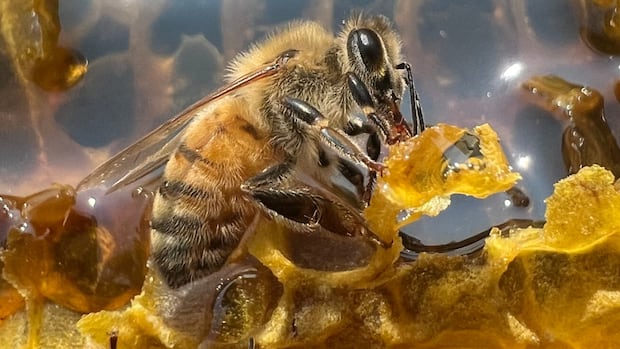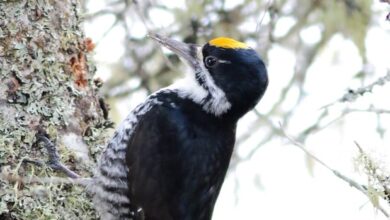Fur traps, legal in New Brunswick, sometimes catch the wrong animal
A Bald Eagle Rescued After Being Caught in a Coyote Snare
A bald eagle is currently undergoing recovery at the Atlantic Wildlife Institute after being found ensnared in a coyote trap. This unfortunate incident is not uncommon, as previous cases involving eagles being trapped in snares have been recorded in the past. Pam Novak, the director of wildlife care at the institute, highlighted that they have encountered similar situations before, with eagles being caught around their neck or having snares embedded in their wings.
The rescued eagle, discovered in the Renous area, was promptly sent to the institute for rehabilitation. Novak emphasized that the recovery process will be gradual and requires careful monitoring. Snares are commonly used by fur harvesters to trap animals like coyotes for their fur, which is used in various products, including clothing.
Fur harvesting is regulated by the New Brunswick government, with specific rules and licensing requirements varying across Canada. Harvesters must adhere to government regulations and obtain the necessary permits to engage in trapping activities. However, animal rights groups have long advocated for the prohibition of traps and snares due to the potential harm they pose to non-target species, such as eagles.
Valerie Kilfoil, a spokesperson for the Department of Natural Resources, confirmed that the eagle in Renous was captured in a legally authorized snare. Despite concerns raised by animal rights advocates, trapping activities continue, with approximately 1,100 fur harvester licenses issued annually in New Brunswick. These licenses permit the trapping, snaring, or hunting of 17 species of fur-bearing animals during the designated snaring season.
Charles Neveu, the president of the New Brunswick Trappers and Fur Harvesters Federation, stressed the importance of ongoing education for harvesters to ensure responsible trapping practices. Neveu mentioned that snares and traps are certified by the Fur Institute of Canada, with various trap models designed to either kill or restrain animals swiftly and humanely.
Efforts are made to minimize the risk of catching non-target species, such as birds, by implementing specific techniques and equipment. Neveu advised trappers on the strategic placement of snares and traps to avoid unintentional captures. Education and awareness campaigns are crucial in promoting ethical trapping practices among harvesters, particularly the younger generation.
Julia Haggerty, a longtime advocate against fur trapping, expressed her disappointment in the lack of regulatory changes over the years. Despite a decline in the popularity of fur products, she believes that trapping for income or sustenance is no longer a necessity in modern society. Animal rights organizations, like Animal Justice, continue to push for stricter regulations on trapping and snaring practices to align with evolving societal values.
In recent years, there has been a significant shift in public perception towards fur trapping, prompting some companies to abandon the use of fur in their products. Canada Goose, a well-known brand, announced its decision to phase out fur from its collection following public outcry. The growing social movement against trapping and snaring reflects a broader shift towards animal welfare and ethical treatment of wildlife.
As the conversation around fur trapping evolves, there is a growing momentum for legislative changes to restrict or eliminate trapping practices in Canada. Advocates like Camille Labchuk emphasize the need for policymakers to align regulations with public sentiment and prioritize animal welfare. The ongoing dialogue on trapping and snaring underscores the importance of ethical considerations and responsible stewardship of wildlife populations.




